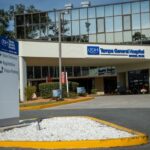 One of the most rapidly evolving areas in medical oncology is the treatment of breast cancerand, most significantly, the growing number of opportunities to make that treatment as personalized as possible. Central to the numerous advances in breast cancer treatment is the emerging role played by molecular biology in understanding the use of gene signatures for assessing patient prognosis, as well as predicting how a patient will respond to chemotherapy. This mounting new research on the molecular mechanisms controlling cell growth and differentiation is rapidly expanding the ability to distinguish the fundamental nature of cancer cells. The result is invaluable progress in designing a treatment for each individual patient.
One of the most rapidly evolving areas in medical oncology is the treatment of breast cancerand, most significantly, the growing number of opportunities to make that treatment as personalized as possible. Central to the numerous advances in breast cancer treatment is the emerging role played by molecular biology in understanding the use of gene signatures for assessing patient prognosis, as well as predicting how a patient will respond to chemotherapy. This mounting new research on the molecular mechanisms controlling cell growth and differentiation is rapidly expanding the ability to distinguish the fundamental nature of cancer cells. The result is invaluable progress in designing a treatment for each individual patient.
There is a two-pronged advantage to possessing these research capabilities. First, for about two years now, prognostic testing has been used at the Boca Raton Comprehensive Cancer Center (BRCCC) to identify patients who can safely avoid chemotherapy and will respond just as well to hormonal therapy, which is much less toxic. Even more advantageous is that the uses for this prognostic test are now expanding to include identification of both node-negative and node-positive patients who can be spared chemotherapy, as well as to classify patients in terms of being at a high- or low-risk for recurrence.
Additionally, among the some 30 clinical trials in breast cancer that currently are underway at BRCCC is TAILORx”Trial Assigning IndividuaLized Options for Treatment (Rx)”which is significant because it is among the first to make possible the study of this specific methodology for personalizing breast cancer treatment.
In order to ascertain the most effective current approach to cancer treatment for women with early stage breast cancer with the fewest side effects, TAILORx integrates a molecular profiling component, which simultaneously examines multiple genes (including those genes that are often associated with the risk of recurrence in women with early-stage breast cancer) and incorporates the results into the clinical decision-making process. These results are then used to determine the most appropriate and effective treatment for women with early stage breast cancer; and, most significantly, to separate those patients who may benefit from chemotherapy from those who may get little or no benefit from receiving chemotherapy treatment.
Ongoing research has also afforded us the ability to identify subgroups of patients who have a triple-negative breast cancer. These cancers have been notoriously difficult to treat because the patients tumors lack the receptors for the estrogen and progesterone hormones, as well as the HER2 protein, all of which are treated by current targeted therapies. Therefore, commonly used breast cancer treatments such as hormone therapy or Herceptin dont work for triple-negative breast cancer because they dont have the right receptors. PARP inhibitors, however, which are an experimental class of drugs, can actually triple the response rate of these patients because the drugs inhibit the ability of damaged cells to repair themselves, triggering either the death of the cancer cells or an increased susceptibility of the cancer cells to chemotherapy drugs. We are currently in the process of obtaining access to PARP inhibitors.
It is also significant that for the one in five women who have HER2 positive factor (Human Epidermal growth factor Receptor 2), there is a host of new drugs that go beyond Herceptin for treating breast cancer. These drugs, comprising a whole new set of advances in which BRCCC researchers played a key developmental role, are helping women with HER2 positive breast cancer who may have previously benefited from Herceptin but are no longer doing so.
Ultimately, the Boca Raton Comprehensive Cancer Center offers a much more robust research infrastructure and significantly more breast cancer trials compared to other facilities and most academic centers, affording breast cancer patients viable options for the most cutting edge treatments available.
Post Views: 786
 One of the most rapidly evolving areas in medical oncology is the treatment of breast cancerand, most significantly, the growing number of opportunities to make that treatment as personalized as possible. Central to the numerous advances in breast cancer treatment is the emerging role played by molecular biology in understanding the use of gene signatures for assessing patient prognosis, as well as predicting how a patient will respond to chemotherapy. This mounting new research on the molecular mechanisms controlling cell growth and differentiation is rapidly expanding the ability to distinguish the fundamental nature of cancer cells. The result is invaluable progress in designing a treatment for each individual patient.
One of the most rapidly evolving areas in medical oncology is the treatment of breast cancerand, most significantly, the growing number of opportunities to make that treatment as personalized as possible. Central to the numerous advances in breast cancer treatment is the emerging role played by molecular biology in understanding the use of gene signatures for assessing patient prognosis, as well as predicting how a patient will respond to chemotherapy. This mounting new research on the molecular mechanisms controlling cell growth and differentiation is rapidly expanding the ability to distinguish the fundamental nature of cancer cells. The result is invaluable progress in designing a treatment for each individual patient. 

























